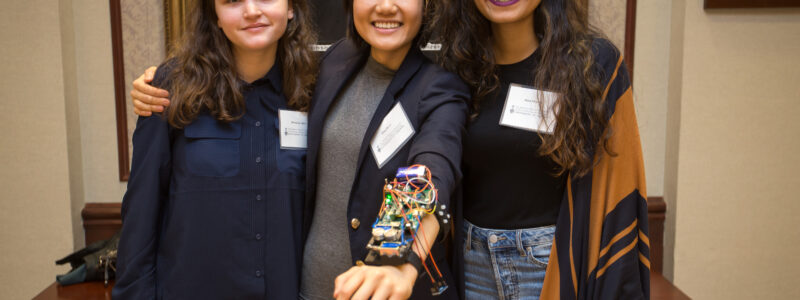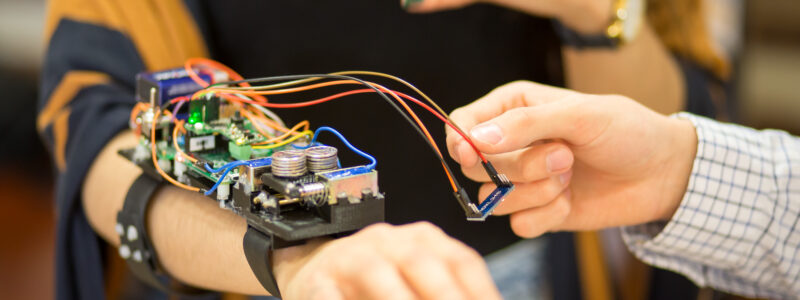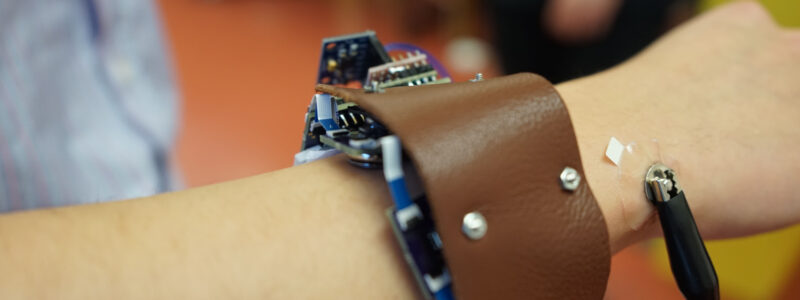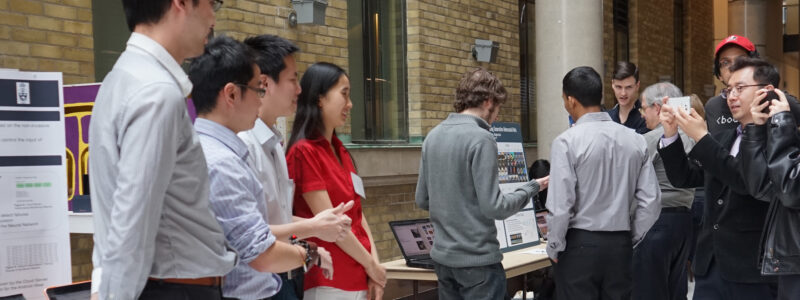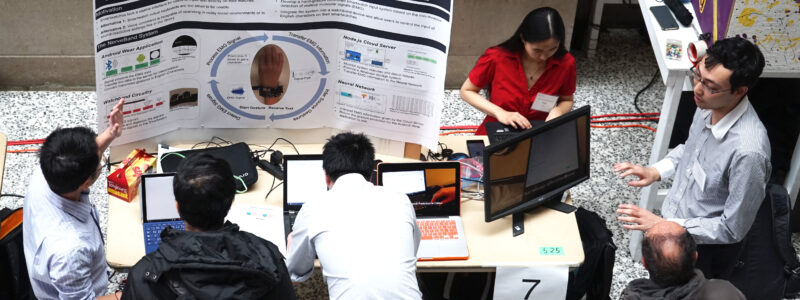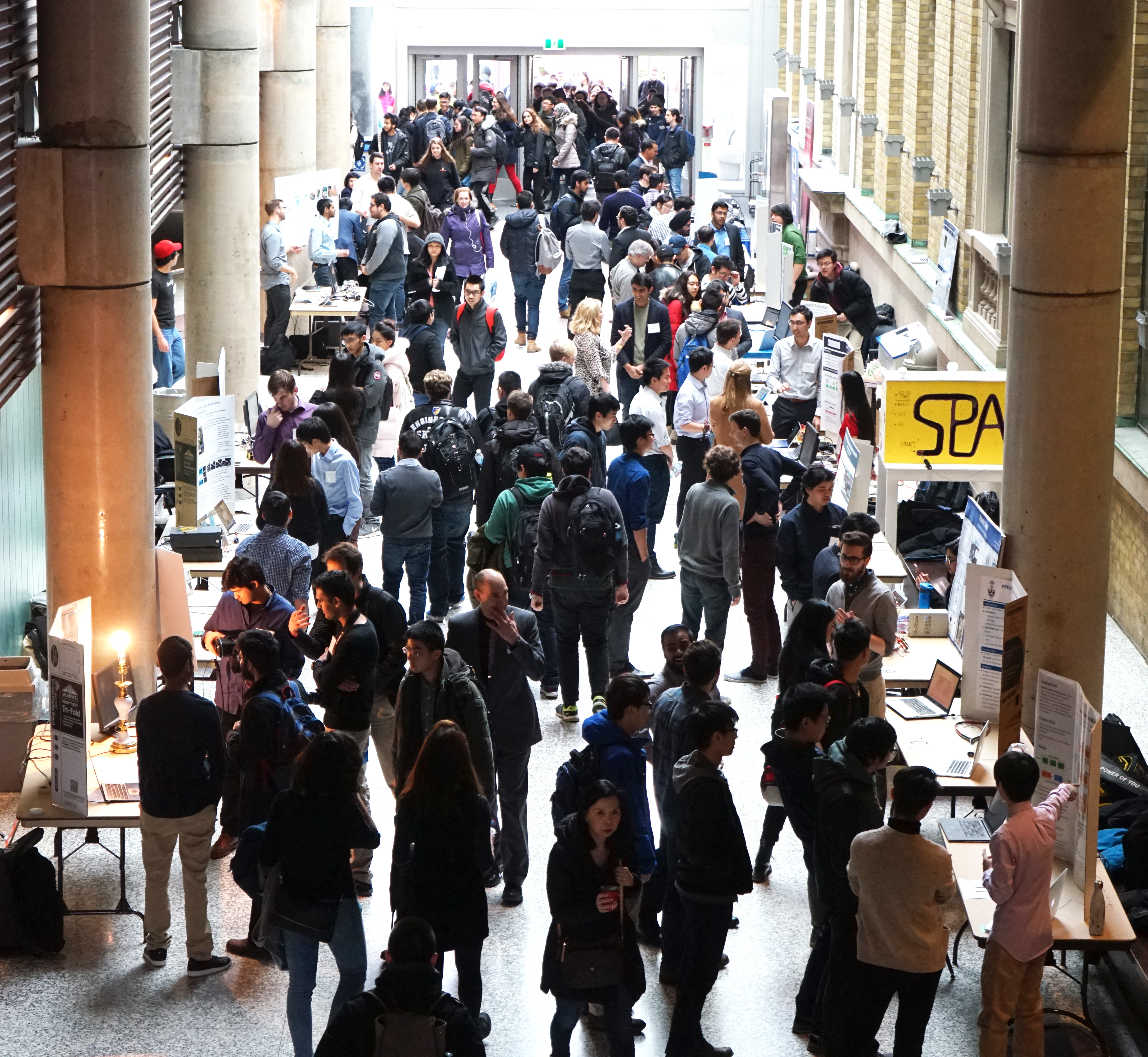
April 18, 2017
Over the course of three days, fourth-year undergraduate students in The Edward S. Rogers Sr. Department of Electrical & Computer Engineering (ECE) showcased their capstone projects during ECE’s annual Design Fair from April 4 to April 6, 2017. The strongest projects were selected to participate in the Design Showcase on Friday April 7: the conclusion of a year-long design project by some of the brightest young minds in electrical and computer engineering.
Students Joanna Zhou, Miranda Davis and Asha Shafiq (all Year 4, CompE) developed a prototype of a wearable device to counteract the tremors that a person with Parkinson’s disease faces in completing everyday tasks. The Hand Stabilizer consists of an accelerometer to read the tremors; a microprocessor that interprets the readings of the accelerometer and calculates the angular frequency of the tremor before sending it through the driver signal to the torque-producing mechanisms. Based on the information sent to them, these mechanisms produce a motion to counter the inherent tremor. “There are products on the market that help patients with Parkinson’s disease maintain their independence in completing specific tasks, such as a stabilizer spoon to help with eating,” said Zhou. “The goal of this device would be to enable the wearer to perform a wide variety of tasks, such as eating, writing or dressing, with independence.”
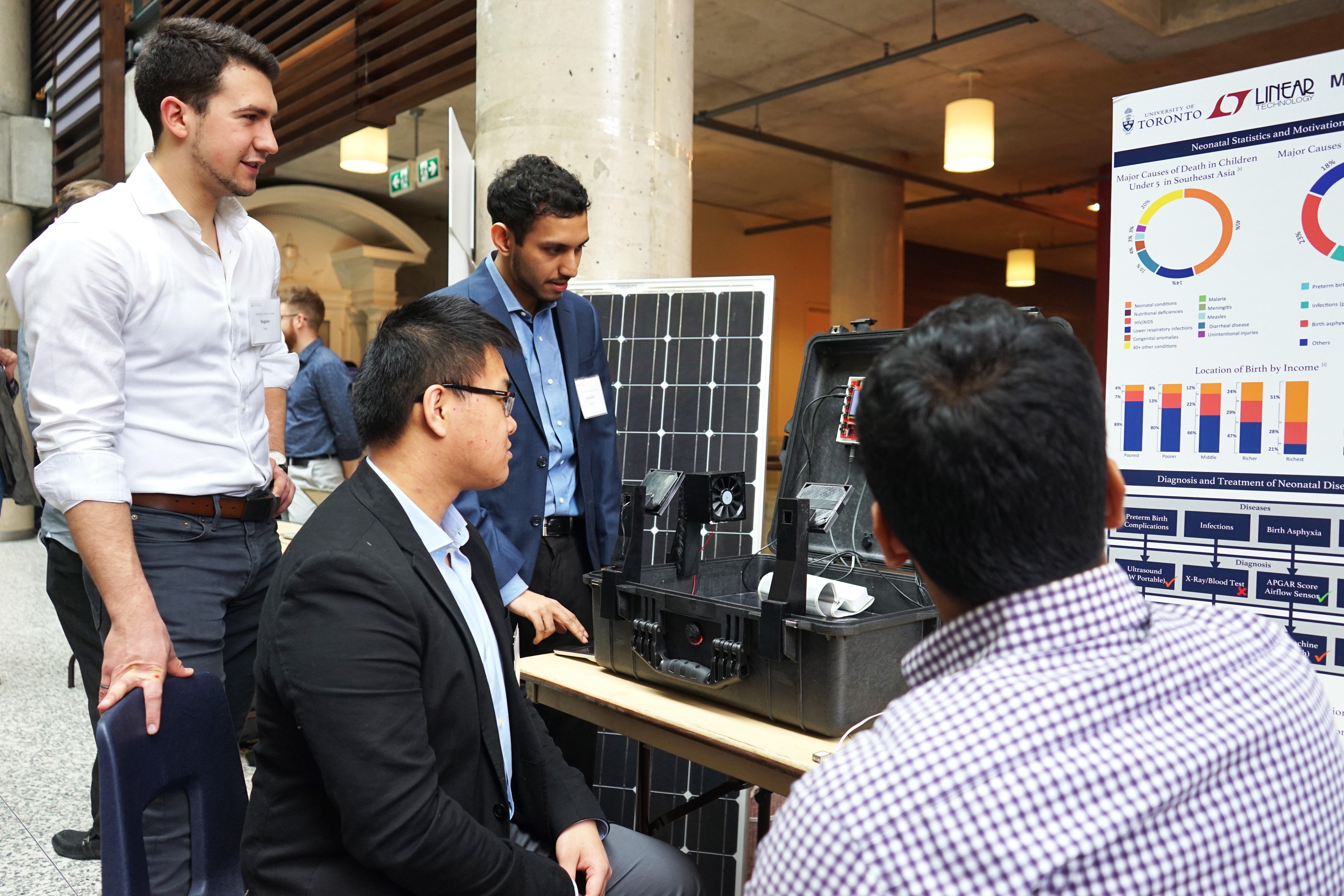
Visitors were also wowed by one group’s portable and self-powered medical clinic. Complex infrastructure needs are required to support medical devices in remote and rural areas and these challenges often prevent access to timely diagnostic and treatment for people in low-resource areas. Benjamin Barrel (Year 4, ElecE), Kevin Rupasinghe (Year 4, ElecE), Jonathan Chan (Year 4, CompE) and Bogdan Vesic (Year 4, ElecE) set out to create a low-cost, portable and off-the-grid ‘Clinic in a Box’ that could diagnose, and, in some cases, treat, neo-natal conditions in the field. “For some diagnoses, the Clinic in a Box can provide the correct care and treatment for a condition in real time: for example, the box has a blue light for treating jaundice in infants,” said Vesic. “Otherwise, it has the capability to communicate the medical test results to external medical facilities to receive treatment options from a medical professional.” The devices within the box are powered by solar panels and batteries and the team incorporated hardware to store patient data and a user interface to display diagnostic results to operators who may have limited medical backgrounds.
Another group looked at some of the current limitations in smartwatch technologies: having access to your calendar, your email and a browser right on your wrist is convenient but without a practical interface for users to easily input text, smartwatches have limited usability. David Sanders (Year 4, ElecE), Owen Yeh (Year 4, ElecE), Linda Shen (Year 4, CompE) and Fred Chen (Year 4, ElecE) tackled this challenge by creating a hand-gesture controlled smartwatch, called the NerveBand. The user pinches their fingers to select characters to be transmitted to their smartwatch. “We first thought about creating a virtual keyboard for smartwatches, but there were still space limitations that would really hinder usability,” said Yeh. “We also explored creating a voice command system, but that would be difficult to control in noisy areas like an airport or restaurant — so basing our system on non-invasive detection of skeletal muscular signals allowed us to overcome both of these challenges.” The NerveBand system includes wearable circuitry that evaluates and records electrical activities by the skeletal muscles; software that provides an interface for users to access the NerveBand system; a cloud server that provides processing and monitoring support for the entire system and the neural network module that enables the system to perform gesture interpretation based on bioelectrical activities.
“This year’s projects really tackle a broad set of challenges in health care, in technology, in industry and beyond,” said Professor Khoman Phang, the course coordinator. “The Design Fair really showcases the caliber of the students’ work and how they’ve worked together to conceptualize, design and execute their projects over the course of just two semesters.”
See and save pictures from the Design Fair and final Design Showcase
See and save pictures from the Fourth-Year & Alumni Celebration following the Design Showcase
More information:
Jessica MacInnis
Senior Communications Officer
The Edward S. Rogers Sr. Department of Electrical & Computer Engineering
416-978-7997; jessica.macinnis@utoronto.ca
